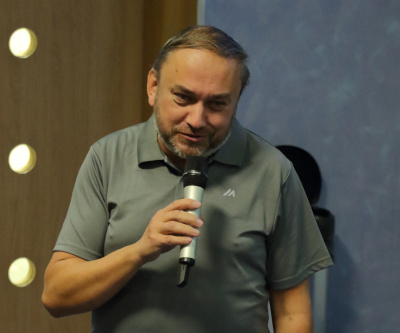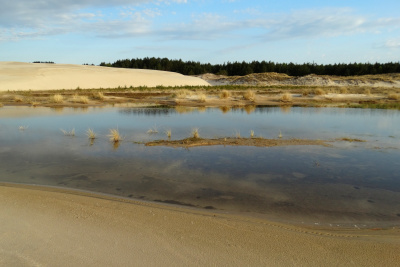
Prof. Roman Cieśliński, Head of the Hydrology and Water Management Laboratory at the Faculty of Oceanography and Geography, University of Gdańsk, has been appointed Chairman of the Scientific Council of the Słowiński National Park for a second five-year term (2025-2030). The Scientific Council of the SNP is an advisory and consultative body supporting the Director of the National Park. Its tasks include assessing the state of natural resources and issuing opinions on draft conservation measures and research and scientific programmes in the field of nature conservation.
‘During the past term, the Scientific Council of the Park was primarily involved in issuing opinions on the draft conservation plan and conservation tasks,’ said prof. Roman Cieśliński, summarising the Council's activities over the past five years. ‘This was an extremely important task, as the Park had been struggling with the lack of a conservation plan for nearly a quarter of a century. At the moment, there is a good chance that the Ministry of Climate and Environment will approve the plan, which has been developed and positively assessed by the Council, and which is to shape the Park's activities for the next 20 years. In turn, conservation tasks are important because they concern a much shorter period (the next three years), during which all tasks to be carried out in the National Park are specified.’
The Council also carried out other statutory activities: assessment of the condition of natural resources, formations and components, assessment of the implementation of annual conservation tasks and the effectiveness of conservation measures, and issuing opinions on research and scientific programmes in the field of nature conservation, as well as presenting conclusions and opinions on matters relating to nature conservation and the functioning of the Słowiński National Park.

Słowiński Park Narodowy; fot. M. Jędro
‘The greatest value of the Słowiński National Park is its inanimate nature - dunes, especially shifting dunes, spits, lakes, including Lake Łebsko and Lake Gardno, Baltic-type raised bogs, beaches,’ explained the Chairman of the Scientific Council of the SNP. ‘Living nature in the form of dune, peat bog, meadow and forest communities is also very important. In total, there are over 900 species of vascular plants, 165 species of bryophytes, 500 species of algae and over 400 species of fungi in the Park. The most important animals in the Park are birds: around 260 species have been classified here. Nearly 500 species of insects also live here, as well as reptiles and amphibians, and mammals, including the wolf and lynx, which are rare in northern Poland.’
As a result of the presence of such valuable elements of living and non-living nature, the Słowiński National Park has been included by UNESCO (as part of the ‘Man and the Biosphere’ programme) in the network of biosphere reserves, and has also been entered on the list of areas protected by the Ramsar Convention. There are also areas included in the Natura 2000 network.
Among the most important challenges facing the Scientific Council over the next five years, prof. Roman Cieśliński mentions solving the problem of pressure from the growing number of wells in the vicinity of the Słowiński National Park and inappropriate development in the Park's buffer zone. In both cases, it is necessary to develop appropriate legal regulations. Other issues include fisheries management and the harvesting of saltwater species in the lakes of the Słowiński National Park. A relatively new problem is the spread of the pine sawfly, a butterfly that is a pest of pine trees, in selected parts of the park's forests. The number of pine sawflies and the rate of their spread are unprecedented in Poland.
Commenting on his re-election as Chairman of the SNP Scientific Council, prof. Roman Cieśliński said: ‘It is a very pleasant experience to be re-elected to this position after a five-year term. It means that you have proven yourself and have not disappointed at key moments. At the same time, you are given another vote of confidence. I have been associated with the Park for over twenty-five years. It was here that I conducted research related to my later habilitation and professorship, it was here that I carried out scientific projects, and it was here that I was finally able to conduct practical research that would support the nature of this area. I met many wonderful people here, with whom I became close, and I fell in love with the local nature. Today, I cannot imagine ever breaking contact with this place and its people. And being the chairman of the Council allows me to help this place, which in many situations needs human help and is so valuable at the same time.’
